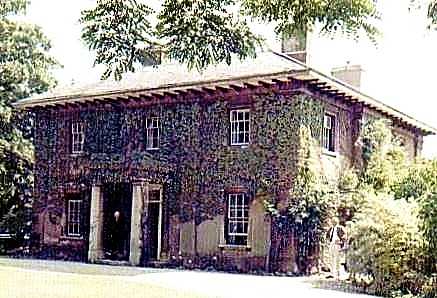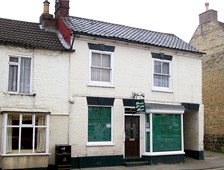|
The future of our listed buildings by REX NEEDLE
Britain is proud of its heritage and of its listed buildings but whether the care lavished on them at national level filters through to these remote urban areas is another matter. St Paul’s Cathedral, the National Gallery, Buckingham Palace and other well-known monuments have become sacrosanct, to be protected at all costs, and various organisations exist to ensure that they do but the same cannot be said for the less important historic buildings that can be found in our smaller towns and villages where control is vested in the local authorities whose time is taken up with providing public services for today’s communities rather than preserving that which has survived from yesterday. In Bourne, for instance, we have the Abbey Church and the Red Hall, flagship buildings from our past and both well preserved through charitable and voluntary effort, but we also have what is probably one of the country’s only Grade II listed fish and chip shops at No 51 West Street, currently trading as the highly popular Dee’s Fish Bar, a late 18th century property with little to commend it architecturally or historically, yet protected as being a building of exceptional interest and one that cannot be altered or demolished without specific permission. There were 75 listed buildings in the parish of Bourne when the original survey was carried out by South Kesteven District Council on 21st July 1977. Fifty-one of them were within the Conservation Area but two have since been demolished. The other 24 were outside the designated area, in Eastgate, Cawthorpe and Dyke, but four of these have also been pulled down. The inclusion of the cemetery chapel on 4th April 2007 and the Ostler memorial on 27th July 2007, both as a result of my approach to English Heritage, rectifies earlier omissions because they were overlooked during the original survey and their inclusion now brings the total to 71. The listing of old buildings is drawn up by the Department of Culture, Media and Sport (DCMS) on the advice of English Heritage which provides various resources for architectural conservation. The system incorporates all pre-1700 buildings that have not been substantially altered and almost all those built between 1700 and 1840 and there are currently 374,000 listed buildings in England, more than 90% of them Grade II, but the number is increasing rapidly. They are divided into categories I, II* and II. Grade I buildings, which are defined as being of "exceptional interest" [only the Abbey Church in Bourne falls into this category] constitute less than 2% of the entries on the list while Grade II* buildings comprise about 4% of the entries. The word listing is a shorthand term used to describe one of a number of legal procedures which help English Heritage protect the best of our architectural heritage. When buildings are so categorised they are placed on statutory lists of buildings of special architectural or historic interest compiled by the DCMS under the Planning (Listed Buildings and Conservation Areas) Act 1990. Inclusion therefore ensures that the architectural and historic interest of the building are carefully considered before any alterations, either outside or inside, are agreed but it is not intended to fossilise a building because its long term interests are often best served by putting it to good use and if this cannot be the one it was designed for, a new purpose may have to be found. The designation brings with it additional responsibilities for those who administer the buildings because they cannot be altered or demolished without special permission and it is therefore implied that they must be kept in a serviceable condition. Smaller parish authorities such as Bourne Town Council usually plead penury when required to carry out repairs to such buildings but grants are available from various sources and the more resourceful councillors who have our heritage at heart will always find ways to preserve these historic landmarks although we cannot always trust our elected representatives to protect what we have because the councils who owned them at the time were only too ready to demolish the Red Hall in 1955, the Ostler memorial in 1961 and the cemetery chapel in 2007. Two other important period buildings have been allowed to deteriorate while the current owners do nothing, the Old Grammar School in South Street and the cemetery chapel in South Road, both of which are listed Grade II yet considered to be buildings at risk and it is frequently asked that if they are of such significance then why have they fallen into such a parlous state of disrepair. The demand to protect such buildings is therefore indeterminate often coupled with public indifference and usually dependent on small pressure groups which, however well-intentioned, have no authority other than to advise those who are prepared to listen, such as Bourne Preservation Society which was formed in April 2008 with the intention of saving and restoring the cemetery chapel but has not yet managed to persuade the town council to hand over the key of the door. A similar effort is also being made by the society to take over the Old Grammar School but have yet to hear whether any substantial progress has been made to allow them begin work or whether the necessary funds have been found. Another example of the arbitrary control we have over preservation has been our Town Hall, built in 1821 and the centre of civic life for almost two centuries, yet despite the available evidence Lincolnshire County Council blithely claimed ownership and after all our local authority services were moved out to a new Community Access Point in March 2012, sought to dispose of the building on the commercial market thus opening the door to a variety of inappropriate uses. It was thought that the vandalism of old properties would end with the Town and Country Planning Act of 1947 which heralded the beginning of the modern listed building system but there have still been casualties and several historic buildings have disappeared locally in recent years and in each case planning permission for the developments which replaced them was given by South Kesteven District Council, the local authority responsible for overseeing such properties and for recognising their heritage value. The most significant case which became the impetus for the formation of Bourne Civic Society was that of No 15 Bedehouse Bank, a mediaeval thatched cottage made from the mud and stud method and one of the last surviving examples of its kind in Lincolnshire and so the property was unique to Bourne where it had been in continuous use for more than 250 years. The dwelling was known as Miss Adams' cottage, after the last tenant who had died, when it was condemned by the local authority as being unfit for human habitation and had been put up for sale as a redevelopment site but the owners failed to find a buyer. Experts insisted that it was sufficiently rare to be preserved, perhaps as a museum, but costs were said to be prohibitive and the owners sought permission to pull it down. Although it was a listed building, the cottage was demolished in 1980 after a public inquiry when objections by the Ancient Monuments Society, the newly-formed Civic Society and other conservation organisations were overruled. Then in 1989, several important buildings on the east side of North Street were pulled down to make way for the Burghley Centre development, among them a chemist's shop with an original Victorian frontage while the premises previously owned by Wherry and Sons which included a distinctive quaint bow window that dated from Regency times also disappeared. There was another important loss to the town in 1999 when No 20 North Road, a substantial stone property from the William and Mary period was demolished with little or no protest to make way for Maple Gardens and only the front gateway with its stone pillars remain as a reminder of its former grandeur and in 2001 the old workhouse in St Peter’s Road suffered a similar ignominious fate despite being a fine example of Victorian institutional architecture by Bryan Browning who also designed our Town Hall. Listed or not, these historic buildings were allowed to slip through the net and the reason must be an expediency of the moment rather than a respect for the past. There can be no other justification for pulling down a William and Mary mansion when we are perfectly happy to protect a fish and chip shop with a Grade II listing. These examples illustrate that the care and protection of our listed buildings remains in the hands of the owners who can do more or less as they wish in the use of their premises and although permission is needed for changes in the structure, the regulations are not always observed. Historic properties are used for a variety of purposes, which is as it should be because not all can be preserved purely as museums or tourist attractions and it is therefore realistic that they be included in the day to day life of the town. Many of our listed buildings therefore have varied and useful functions such as the fish and chip shop in West Street while others in the road include No 12, also known as Monkstone House, which has been an Indian restaurant since 1993, Nos 19 and 21 which have become a busy dental practice and No 35, also known as Saxonhurst, now a café and coffee shop, and there are other similar examples around the town where protected buildings are providing a vital service as retail outlets and offices. By all means, old properties must be saved and it is obvious which of those are worth preserving. But our approach must be pragmatic and we should beware of wanting to protect a building merely because it is old or has an unusual feature such as a sloping roof and consider the property as a whole and its suitability in the street scene, whether it is aesthetically pleasing and will have a usefulness in the future and if these principles are not met then it should go as and when the time comes to replace it with something better. We may romance about preserving our historic buildings but there is little practicality in some of them and the only sure means of preserving the less important ones is for them to have a commercial or business role which generates income to maintain them in an appropriate manner although we must be thankful that the Town Hall will not suffer the same fate, having just been given back to the community by Lincolnshire County Council after the abortive attempt to sell the building when it might have become a night club, a carpet warehouse or even a Weatherspoon public house. NOTE: This article was first published by
the Bourne web site
Go to: Main Index Villages Index |
||||

